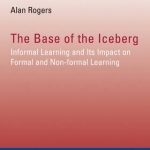The Base of the Iceberg: Informal Learning and its Impact on Formal and Non-Formal Learning
BookThis item doesn’t have any media yet
2014 | Education
This book looks at informal learning, in the context of a global concept of learning, as formal, non-formal and informal, as lying on a continuum - most learning situations are composed of both formal (planned) and informal (unplanned) elements. Informal learning, the larger but hidden part of learning, is universal (everyone learns informally during life's experience), ubiquitous and continuous (not limited to specific locations and times) - that is, true lifelong learning. But it is largely unconscious learning, resulting in tacit funds of knowledge and banks of skills that are used every day to negotiate our way through life. In particular, it creates the basic assumptions which all student-learners bring to any new learning. The book then examines the impact which informal learning has on formal and non-formal learning. The values, beliefs, sense of confidence, expectations, the prior knowledge, skills and attitudes which student-learners bring unconsciously will determine the responses of the student-learners to the new learning.
Planned learning can build on informal learning, redress some of the undesirable outcomes of informal learning; and teachers can help the student-learners to become more conscious of their prior learning through dialogue between formal/non-formal learning and informal learning. Drawing on his earlier studies and a wide range of literature on learning and teaching, Alan Rogers provides a practical study aimed at practitioners in adult education, trainers of trainers, and students in courses on adult, continuing and lifelong education.
Related Items:
| Published by | Verlag Barbara Budrich |
| Edition | Unknown |
| ISBN | 9783847406327 |
| Language | N/A |
Images And Data Courtesy Of: Verlag Barbara Budrich.
This content (including text, images, videos and other media) is published and used in accordance
with Fair Use.
